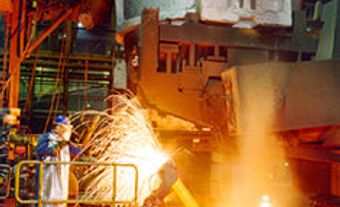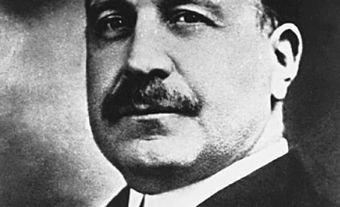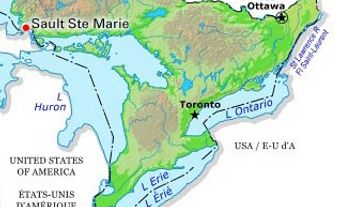Algoma Steel Inc. is a major steel producer based in Sault Ste. Marie, Ontario. Its principal products are steel plate and sheet for various industries, including automotive, construction and manufacturing. The company employs more than 2,900 people in Sault Ste. Marie.
History
In 1901, Francis Clergue founded the Algoma Iron, Nickel and Steel Company in Sault Ste. Marie. Construction of the steel plant finished the next year. It had two blast furnaces, a Bessemer converter and mills to roll steel into blooms and rails (see Iron and Steel Industry). The company used iron ore from a mine that Clergue had developed near Wawa, Ontario.

Financier and industrial promoter Francis Clergue (date of photograph unknown).
One of Algoma’s first contracts was an order of rails for the Intercolonial Railway. However, production problems delayed Algoma’s delivery of the rails. Financial troubles forced Algoma’s parent company — under which Clergue also ran other businesses in the region — to reorganize under new owners in 1904.
By 1912, the steel company had adopted the shorter name Algoma Steel Corporation. During the First World War, Algoma Steel made shells and other products for the war effort. The company survived bankruptcy during the Great Depression in the 1930s, once again changing hands to new owners.
The steel plant underwent several upgrades and expansions in the 20th century. One of its customers in the midcentury was General Motors (GM). Under an agreement signed in 1951, GM loaned Algoma $15 million for an expansion of Algoma’s facilities. The automaker also agreed to buy steel from Algoma until 1967.
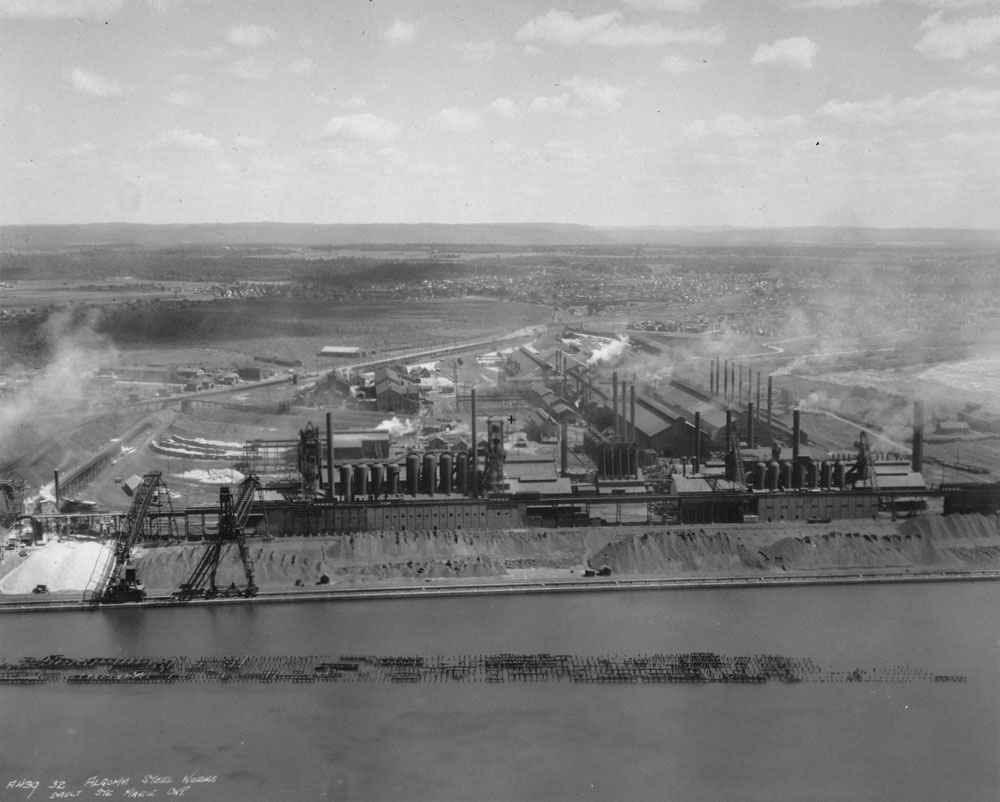
The Algoma Steel plant in Sault Ste. Marie, Ontario (1965).
The severe slowdown in the North American steel market in the 1980s led to a restructuring of Algoma Steel in 1992. It finished a second restructuring in 2002 and recorded its most profitable year ever in 2004. In 2007, the company was acquired by Essar Steel Holdings Limited, a subsidiary of Essar Global, a diversified industrial company. Its name changed to Essar Steel Algoma.
The prosperity the company had enjoyed in the early 2000s was interrupted by the recession of 2008–09. The demand for steel once again dropped. Essar Steel Algoma suffered losses of $330.5 million in the last nine months of 2009, compared to profits of $220.8 million in the same period of 2008.
In 2018, after yet another restructuring, new owners bought the company’s assets from Essar Steel Holdings. The new Algoma Steel Inc. invested $300 million to modernize the Sault Ste. Marie plant. It has declared itself to be “a stronger, more sustainable Canadian steel company.”
Major Facilities
Algoma’s No. 7 blast furnace can produce 5,000 tons of iron per day. It converts iron ore into impure liquid iron, and this iron is fed, along with scrap, into a basic oxygen furnace (BOP) that converts the iron and scrap into liquid steel. Two continuous-casting machines then solidify the liquid steel into slabs and bloom profiles. (See Iron and Steel Industry.)
A 166-inch (422-cm) plate mill rolls the cast slabs into plate of up to 152 inches (3,860 mm), some of the widest plate produced in North America. An in-plant heat-treating facility normalizes, quenches (hardens) and tempers the as-rolled plate to improve plate properties (strength, abrasion resistance). Plate is used in shipbuilding, construction, mining, manufacturing, energy and military contexts.
Algoma’s 106-inch (269-cm), six-stand, hot-strip mill rolls low-carbon steel slabs into hot-rolled strip in widths of up to 96 inches (2,440 mm). In 1997, Algoma began operation of its Direct Strip Production Complex, one of the most modern in the world and the centrepiece of the company’s operations today.
The plant’s hot- and cold-rolled sheets are widely used in the automotive industry. Algoma also makes hollow structural pipe and tubing from steel sheets.
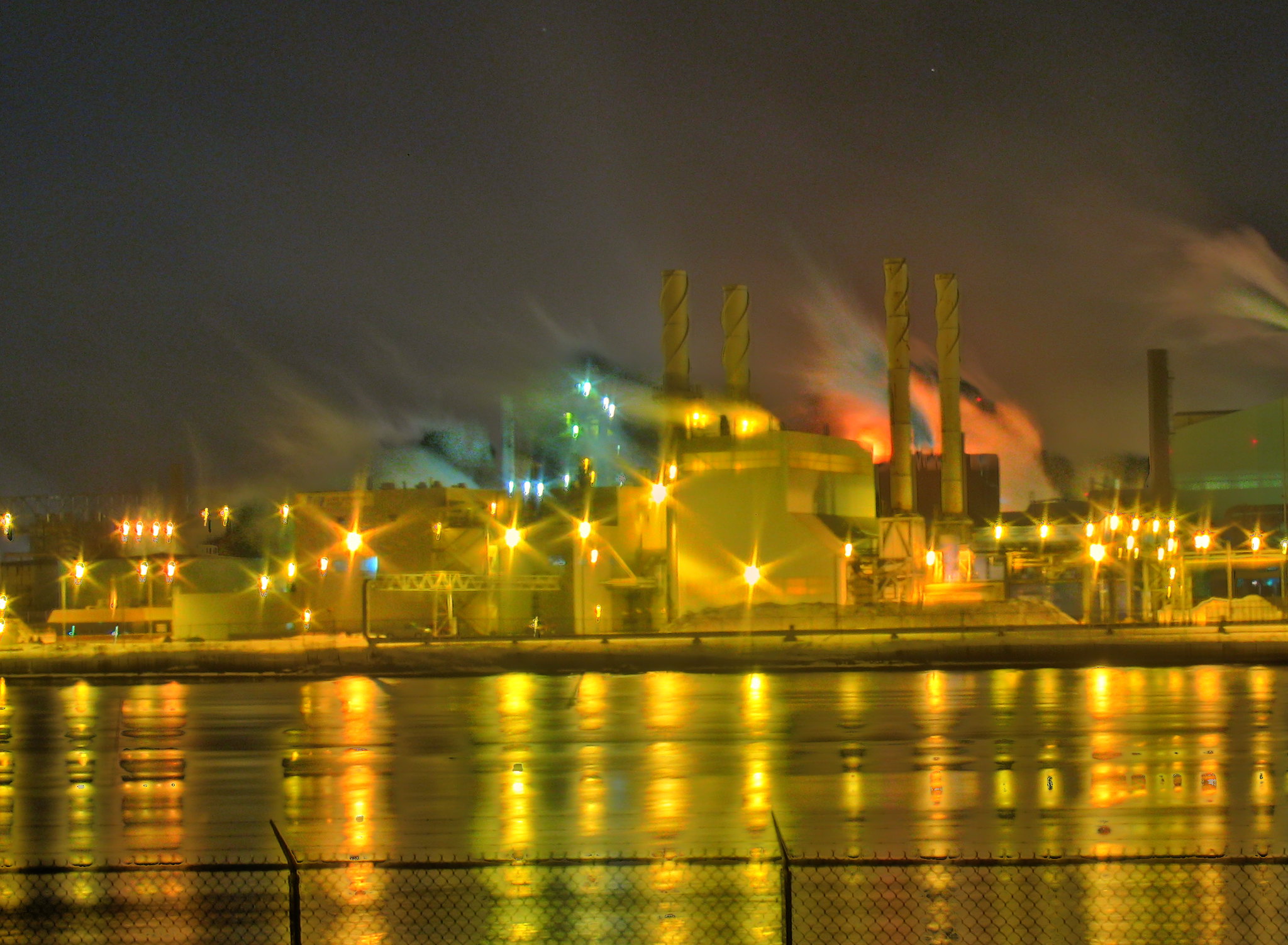
Essar Steel Algoma at night, 13 February 2009.

 Share on Facebook
Share on Facebook Share on X
Share on X Share by Email
Share by Email Share on Google Classroom
Share on Google Classroom

